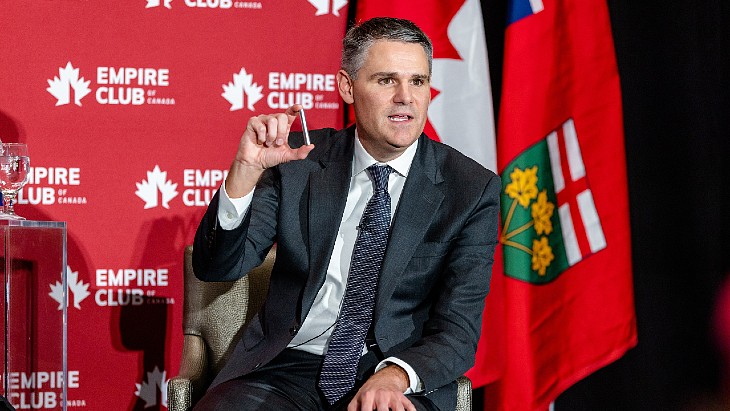TerraPower expands cooperation with Japan on fast reactors
.jpg)
In the strategic roadmap for fast reactor development adopted by Japan's Cabinet in December 2018, a policy was defined to assess the efficacy of various types of fast reactors to be developed following a technological competition among private-sector corporations. The roadmap was subsequently revised by the Cabinet decision in December 2022, at which time two decisions were taken: firstly, to select a sodium-cooled fast reactor as the target of the conceptual design of the demonstration reactor, set to get under way in fiscal 2024; and secondly, to select a manufacturer to serve as the core company in charge of the fast reactor's design and requisite R&D which would proceed with technology development in accordance with the goals and policy directions established by the government.
In July this year, MHI was selected by the Japanese government to lead the conceptual design of a demonstration 650 MWe pool-type, sodium-cooled fast reactor that is to enter operation in the 2040s. MHI will oversee both the conceptual design as well as research and development for the reactor in partnership with MFBR. It is hoped that the concept will be finalised by around 2030.
TerraPower and the Japanese partners have now expanded their MoU to allow them to explore the opportunity to collaborate on a common reactor design concept, based on Japan's demonstration programme and TerraPower's existing technologies. The MoU has been revised to include an increase in size of the Natrium design for enhanced cost competitiveness, and metal fuel safety.
TerraPower has been selected by the US Department of Energy to receive cost-shared funding through the Advanced Reactor Demonstration Program to test, licence and build an advanced reactor by 2030. The company has selected Kemmerer in Wyoming as the preferred site for the Natrium nuclear power plant demonstration project, which will feature a 345 MWe sodium-cooled fast reactor with a molten salt-based energy storage system. The storage technology can temporarily boost the system's output to 500 MWe when needed, enabling the plant to follow daily electric load changes and integrate seamlessly with fluctuating renewable resources.
"We are thrilled to expand our collaboration with JAEA as Japan works to bring advanced nuclear reactors to market," said TerraPower President and CEO Chris Levesque. "In order to achieve our climate goals, countries across the world are going to need to deploy advanced reactors starting in the 2030's, and this agreement will help us evaluate the design opportunities for large-scale Natrium plants that can support Japan's carbon targets."
Fast neutron reactors offer the prospect of vastly more efficient use of uranium resources than in conventional power reactors, as well as the ability to burn actinides. Fast reactors have operated in various countries since the 1950s, with some producing electricity commercially.
JAEA has a history of operating sodium-cooled fast reactors, such as Monju in Fukui Prefecture and the Joyo experimental fast reactor in Ibaraki Prefecture. However, the development of fast reactors in Japan has been halted since the government decided to decommission Monju in 2016, following a series of problems, including leakage of sodium coolant in 1995.
"JAEA will play a role as one of the organisations in the strategic roadmap for fast reactor development," said JAEA President Masanori Koguchi. "For effective development, we believe that international cooperation is one of the key issues. We will promote Japan-US collaboration on fast reactor development through this expanded MoU."
MHI Executive Vice President Akihiko Kato said: "MHI group, as the core company in charge of design and development of the Japanese demonstration fast reactor, will steadily proceed in accordance with the strategic roadmap. We would like to contribute to fast reactor development cooperation between the US and Japan by utilising the technology and experience we have cultivated over many years."
_92619.jpg)

_84504.jpg)







_88592.jpg)

